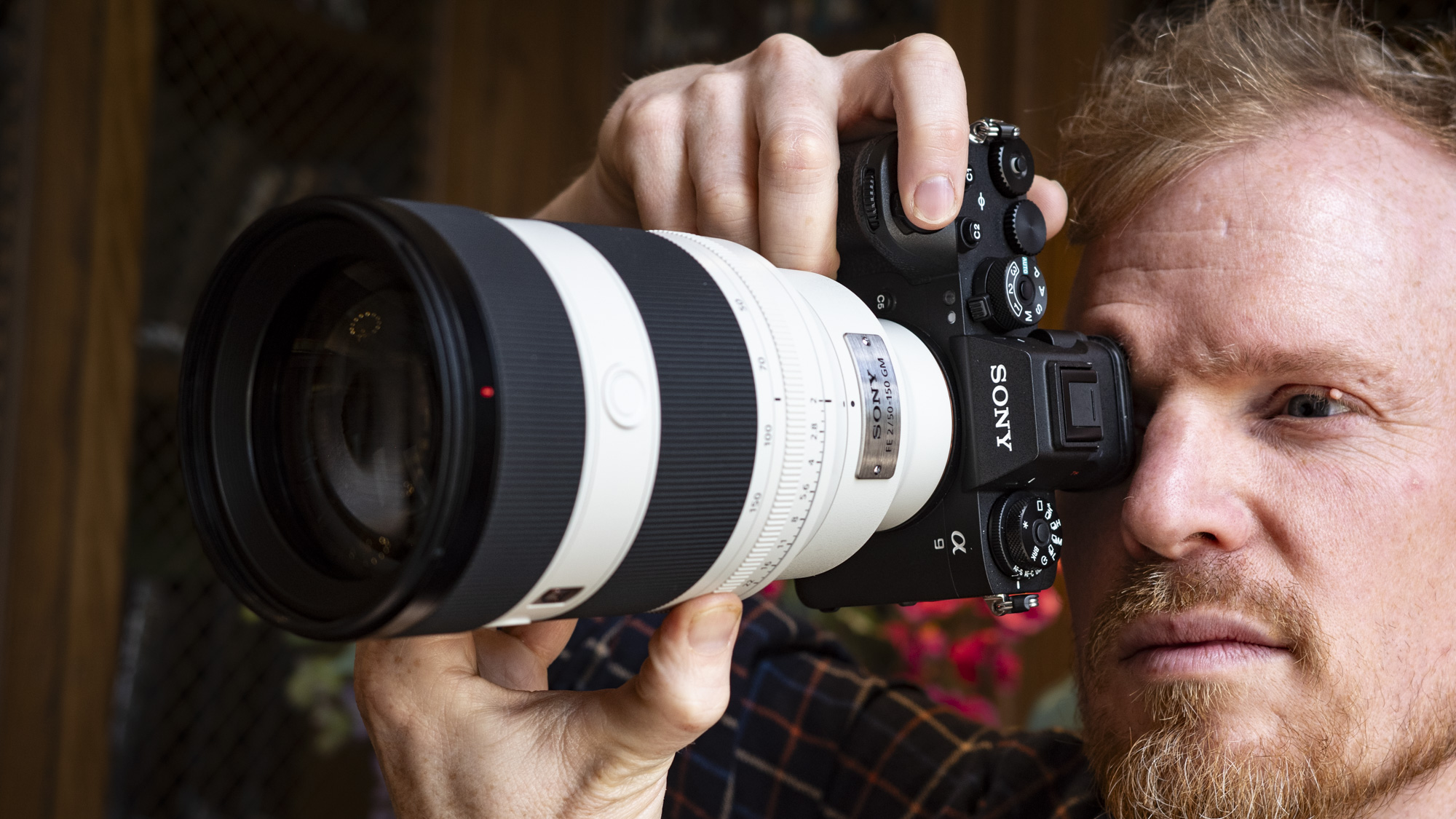TechRadar Verdict
Following the five-star-rated FE 28-70mm F2 GM, Sony has delivered an equally impressive telephoto zoom with constant maximum f/2 aperture, the FE 50-150mm F2 GM. At first I wasn't convinced by the zoom range, but after rigorous testing, I reckon it's the most versatile and high-quality pro zoom I've used for events. Paired with a high-resolution Sony camera such as the a7R V, with its image-cropping potential, the lens can easily handle grass-roots sports, too. This is the lens that I wished was available for my (other brand) camera system, and is one of the most compelling reasons to switch to Sony yet.
Pros
- +
Consistent f/2 aperture across zoom range
- +
Gorgeous bokeh, crisp detail
- +
Versatile zoom range
- +
Superb build quality
Cons
- -
Big and heavy
- -
Zoom range might not suit all users
- -
Really pricey
- -
No optical stabilization
Why you can trust TechRadar
Sony FE 50-150mm F2 GM: two-minute review
Sony's lens department is on a roll. Its superb FE 85mm F1.4 GM II bagged our 2024 lens of the year award; the recent FE 28-70mm F2 GM picked up a five-star rating; and now we have the FE 50-150mm F2 GM, which is the world's first telephoto zoom with consistent f/2 maximum aperture – and it's another stunning flagship optic.
When I was first presented with the 50-150mm lens in April, I wasn't convinced by its unique focal length. Especially when you consider the 28-70mm F2 GM, plus a string of other pro 70-200mm lenses from down the years, which includes the FE 70-200mm F2.8 GM OSS II.
However, following extended use, I'm convinced the 50-150mm is probably the single most versatile lens for the type of photography I often do – events, grass-roots sports, weddings, candids – and it's easily one of the best Sony lenses ever.
The 50-150mm lens is part of Sony's professional G Master (GM) range, which means handling, durability, autofocus performance and optical quality are all top-drawer. Add its bag-of-primes-in-one-lens credentials, and the result is an eye-watering list price.

The real kicker, though, is the 50-150mm's heft – it weighs a wrist-tugging 1,340g. It was fine over the course of a soccer match, but all day at a wedding would be a proper workout. It's chunky, too, measuring 102.8 x 200mm – that's a particularly big diameter that will stretch the compartments of a regular camera bag.
Having what is effectively several fast aperture primes in one versatile optic makes sense for a certain type of user. It's the telephoto zoom flexibility and bright maximum f/2 aperture at any focal length that make the 50-150mm the goat for events photography, where speed, low-light performance, rapid autofocus, pin-sharp detail, shallow depth of field and buttery bokeh are needs, not wants. The 50-150mm ranks highly across the board.
Before the 50-150mm lens was announced, my go-to lens combination for events was a 24-70mm f/2.8 and a 135mm f/1.8. However, having put Sony's impressive telephoto zoom through its paces, I'm now reconsidering this setup – and even the camera system I've spent years building up. I can't think of any higher praise for a lens.
Sign up for breaking news, reviews, opinion, top tech deals, and more.
Sony FE 50-150mm F2 GM: specs
Type: | Standard to telephoto zoom |
Mount: | Sony E-mount |
Sensor: | Full-frame |
Focal length: | 50-150mm |
Max aperture: | f/2 |
Minimum focus: | 0.4(W)-0.74(T) m / 1.32(W)-2.43(T) ft |
Filter size: | 95mm |
Dimensions: | 102.8 x 200mm (4-1/8 x 7-7/8 in) |
Weight: | 47.3oz / 1,340g (excluding tripod mount) |
Sony FE 50-150mm F2 GM: price and availability
- $3,899 / £3,799 / AU$6,799
- Available for pre-order
Beyond its size and weight, if there's one thing that the FE 50-150mm F2 GM lens has going against it, it's the list price – which at the best part of $4,000 / £4,000 / AU$7,000, is eye-watering.
To put that into context, you could pick up both Sony's 24-70mm F2.8 and 135mm F1.8 G Master lenses and have change left over – or, for a little extra, the 24-70mm with Sony's 70-200mm F2.8 GM II.
Put simply, you have to really need the maximum f/2 aperture over f/2.8 to justify the extra outlay, and to put up with that extra weight. I'll get onto the benefits of the brighter aperture later in the reivew.
Naturally, the 50-150mm lens is billed as an ideal pairing with the 28-70mm F2 to cover a huge range of scenarios that would otherwise require an army of primes. I actually think the 50-150mm is the more compelling of the two f/2 lenses.
I'd happily pick up the 50-150mm and a wide prime such as the (cheaper) 24mm F1.4GM instead of the 28-70mm to cover the times when the telephoto zoom isn't wide enough – I'm not sure 28mm is wide enough for me.
Sony announced the 50-150mm lens in April, and at the time of writing it's available for pre-order, with the anticipated sales start date some time in June, 2025.
Sony FE 50-150mm F2 GM: Design
- Big and heavy
- Robust, weather-sealed build
- Internal zoom and focusing




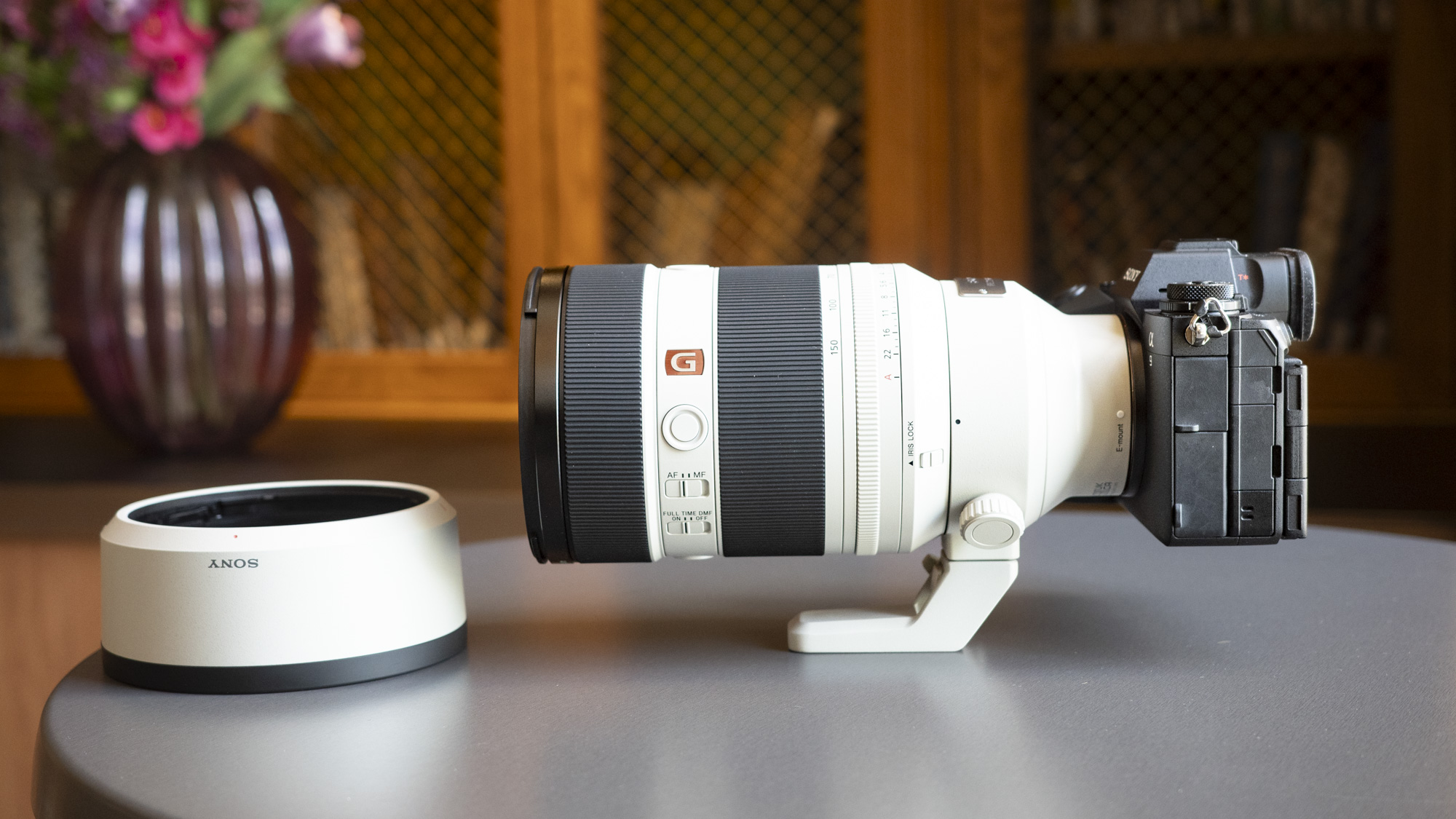
The bigger the maximum aperture, the bigger the lens, so it should come as no surprise that the Sony FE 50-150mm F2 GM is a substantial optic – a cumbersome 47.3oz / 1,340g, excluding the tripod mount.
For context, Sony's second-generation 70-200mm F2.8 GM OSS II lens weighs 36.9oz / 1,045g – that's 20-25% lighter. The pair are identical in length, measuring 200mm, but the diameter of the 50-150mm lens is wider at 102.8mm.
Such is the diameter of the lens, I found it struggled to fit into the padded dividers of numerous camera bags, requiring a reconfiguration of the dividers in most instances. Naturally, the 50-150mm lens' filter thread is bigger than most, too, accepting pricey 95mm lens filters.
Paired with the a7R V, I felt the combination was a little front-heavy and wished for Sony's vertical grip, which would make for a more comfortable setup. Without the grip, I happily photographed a soccer match, while supporting the lens with my second hand.
I would hesitate using the lens for weddings, but the action on such days can be in bursts, so weight might not be an issue. For lengthier, sustained shoots, the 50-150mm isn't too far off the size and weight of pro lenses benefiting from a monopod support.
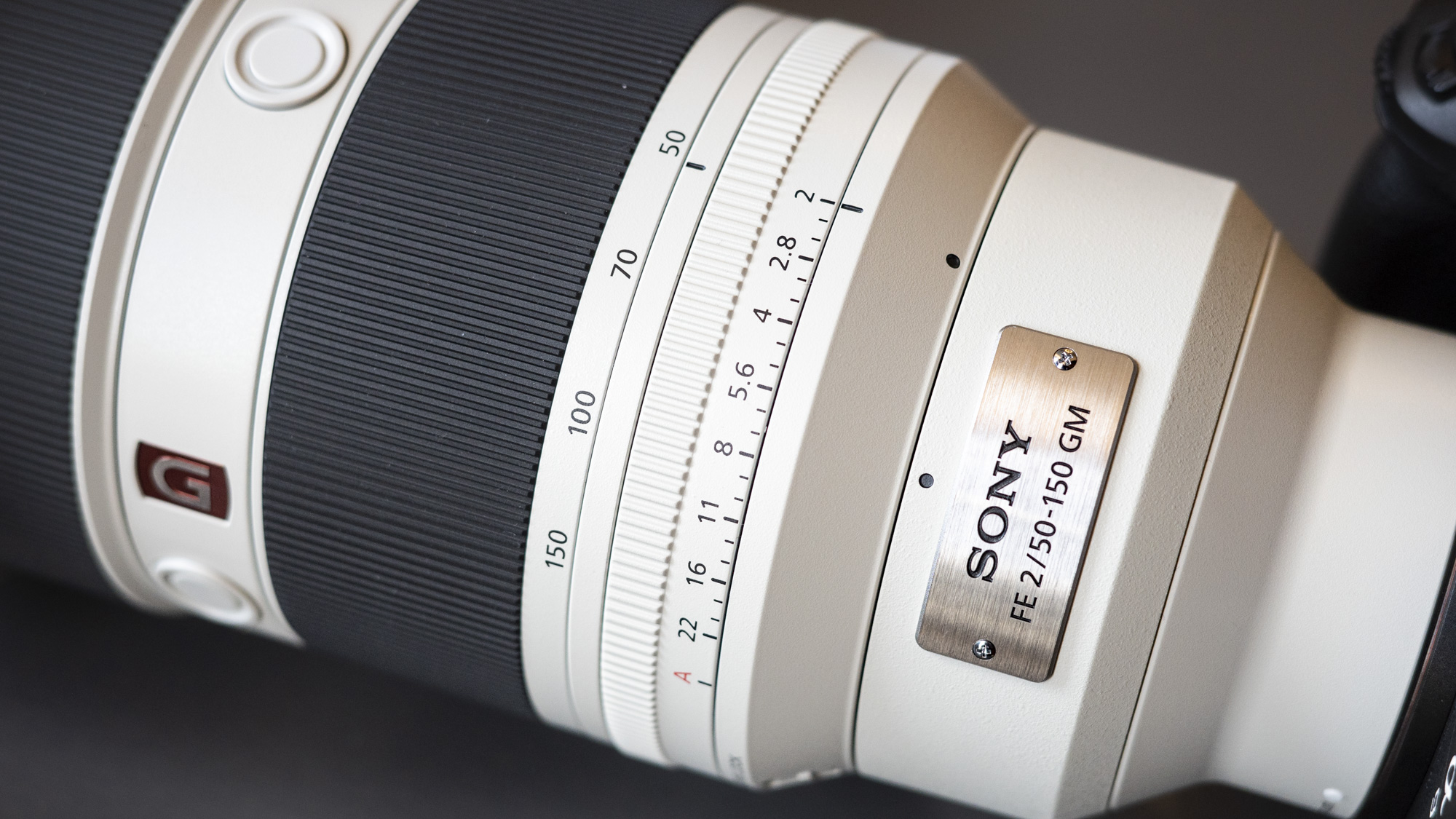
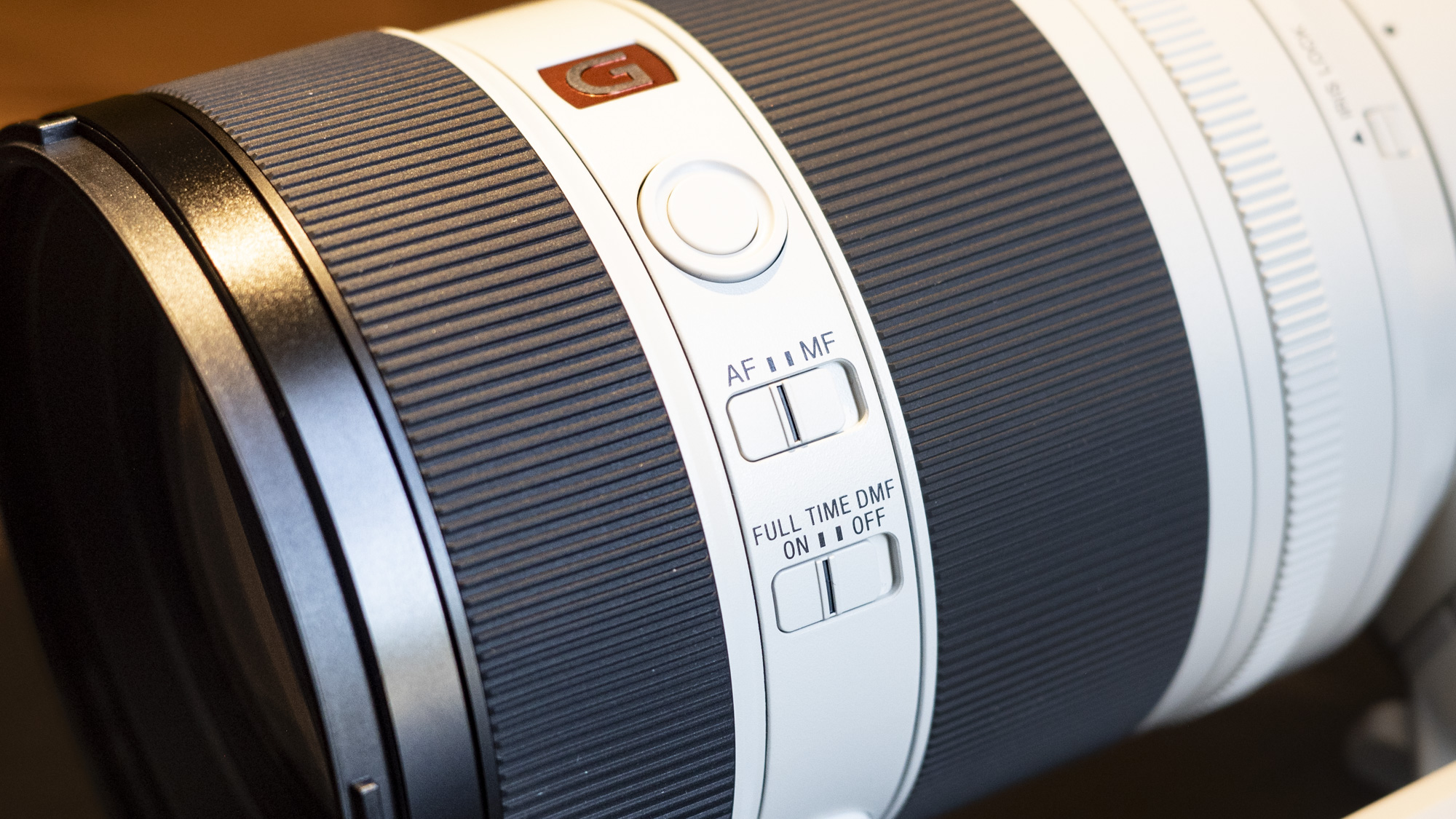


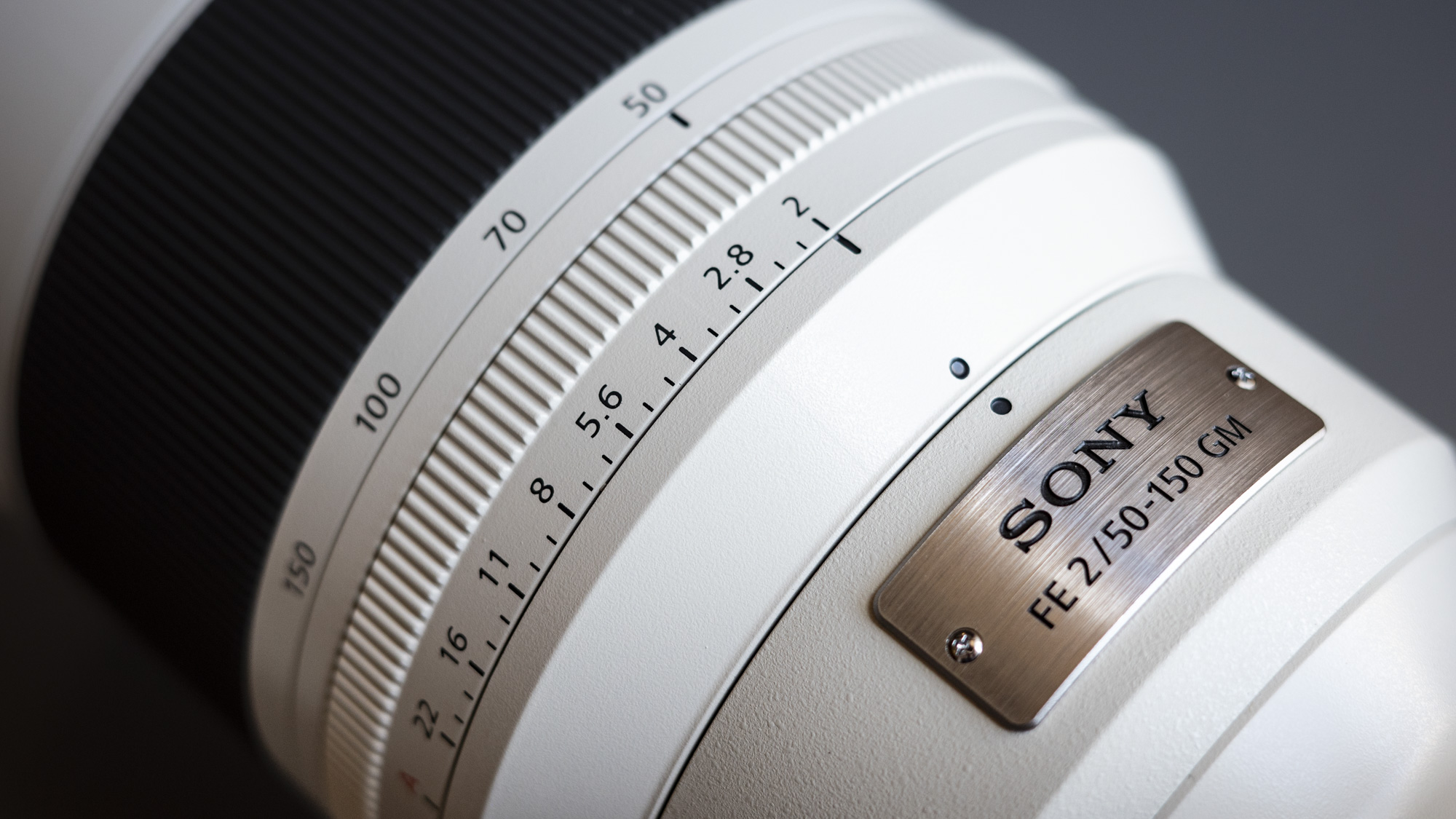
The handling of the lens is otherwise superb – every G Master lens I've tested is. Here, in the same mould of the FE 28-70mm F2 GM, you get a full complement of controls; rings for focus, zoom and aperture; plus customizable focus hold buttons, AF/MF, iris (aperture) lock and full time DMF switches – the latter lets you manually override autofocus.
However, optical stabilization is absent, which I find a little surprising. More on this later.
Aperture can be changed on the lens through smooth or clicked adjustments. In general, photographers opt for the tactile clicked feedback, while videographers prefer the smooth movement through f-stops, for whom the ridged ring will be compatible with follow-focus systems.
Zoom is internal, which means the lens barrel remains the same length whatever the focal length. That's one less point of potential weakness in this a fully weather-sealed lens built to withstand the rigors of professional use and inclement weather.
Put simply, no corners have been cut here – this is a top-quality lens. I'd just advise getting hands-on before you buy to check that its size and weight work for you.
Sony FE 50-150mm F2 GM: Performance
- Fast f/2 maximum aperture at every focal length
- Strong center sharpness across the zoom range
- Four XD linear motors for rapid, accurate autofocus
In many respects, the FE 50-150mm F2 GM lens is a copy and paste of the superlative FE 28-70mm F2 GM – it's also equipped with four XD linear motors that drive autofocus. Together, these motors make light work of the sizable lens elements, for a truly rapid, reliable and remarkably quiet autofocus.
Autofocus speed and accuracy are paramount for high-pressure events and sports photography, and I've been consistently impressed by the 50-150mm. This is especially the case with the a7R V's subject-tracking capabilities – when shooting grass-roots soccer, in particular. There isn't the slightest hint of hesitation.
As mentioned, what's missing is optical stabilization (OIS). However, Sony's flagship mirrorless cameras, which are the natural choice for such a lens, are equipped with in-body image stabilization (IBIS). Armed with IBIS and the bright maximum f/2 aperture, I haven't given OIS a second thought.



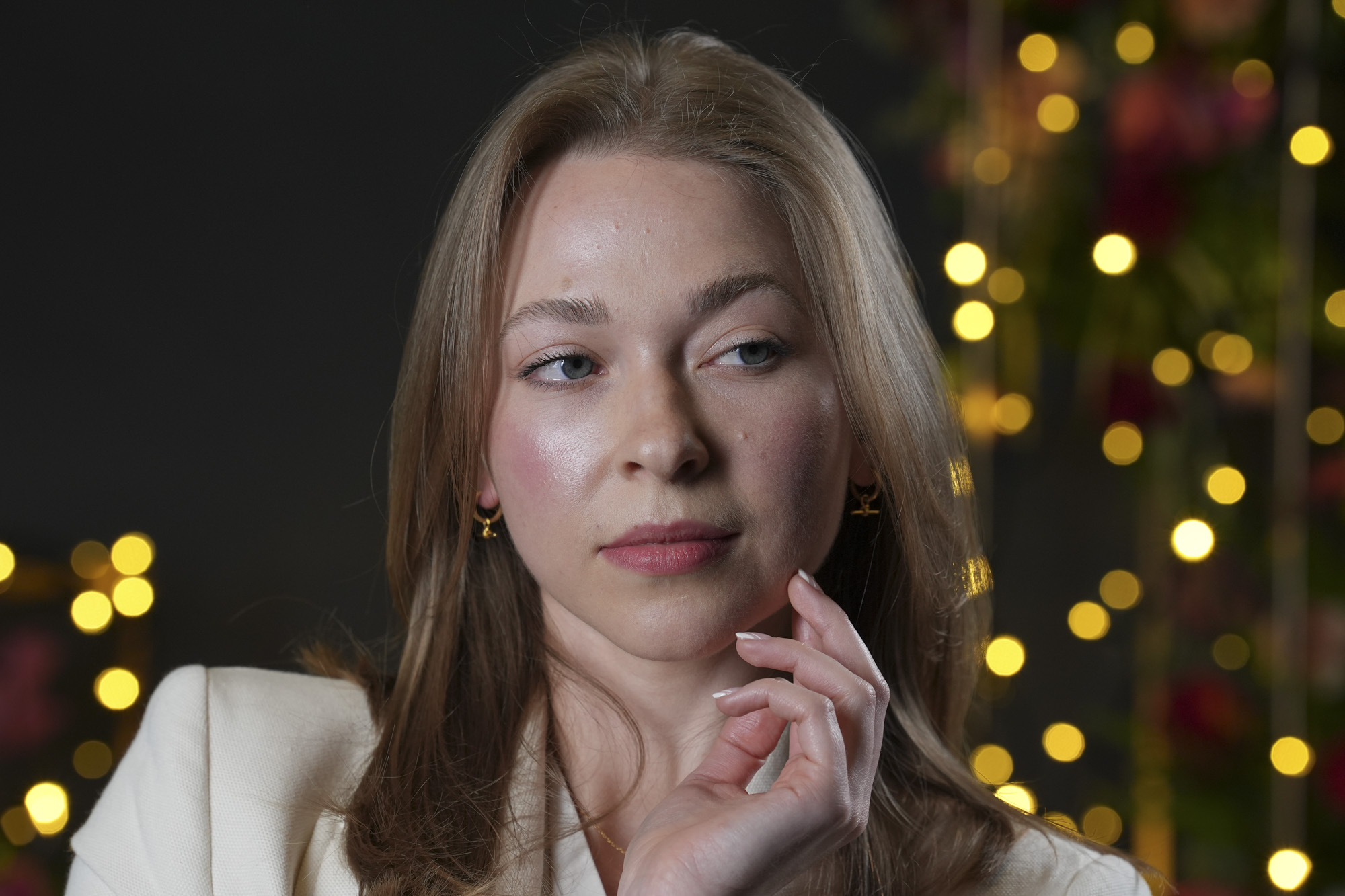
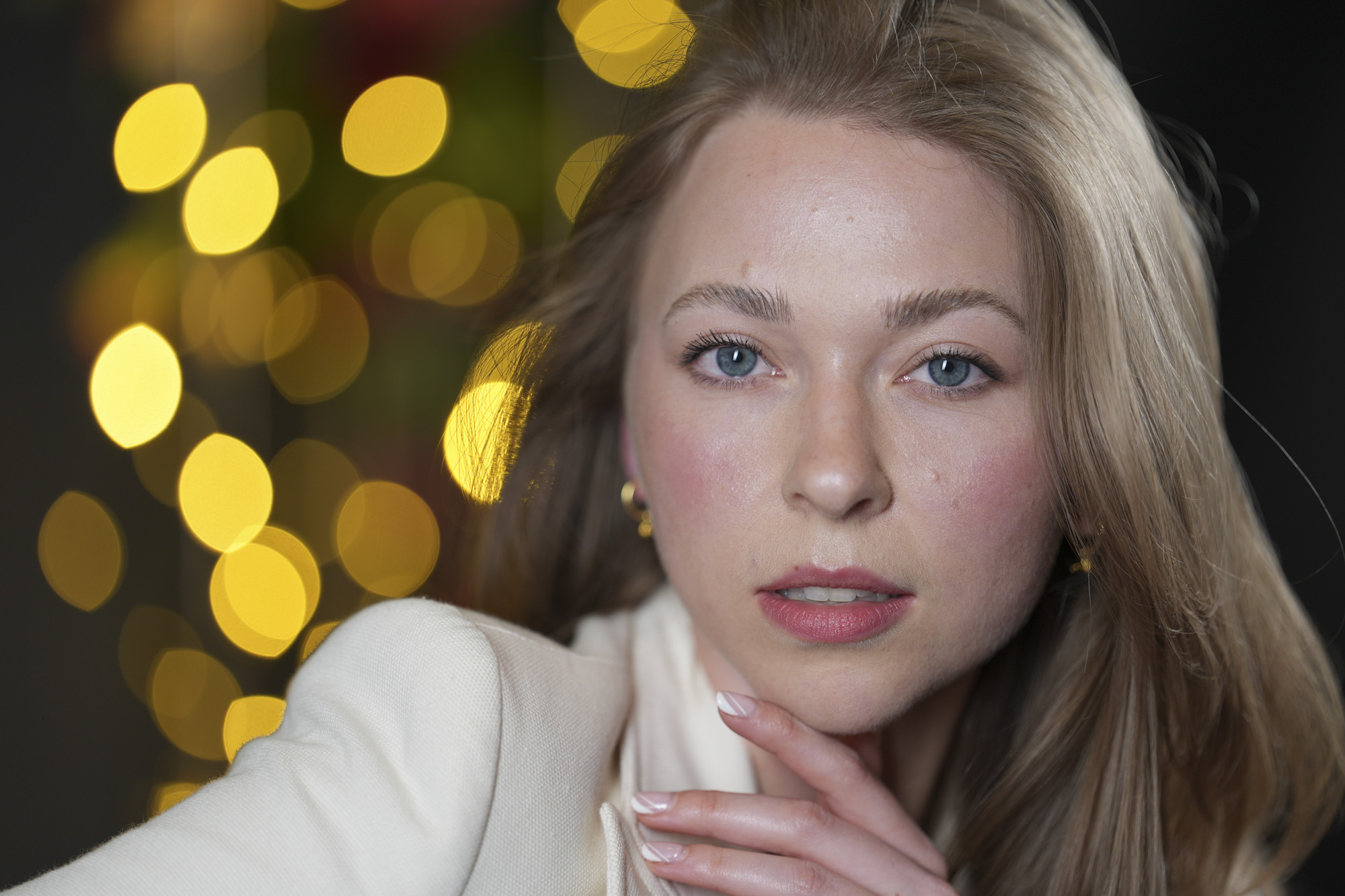

Like the Sony FE 28-70mm F2 GM, the FE 50-150mm F2 GM delivers incredible image quality across the board. And of the two, it's the telephoto option that enhances the maximum f/2 aperture with smooth focus fall-off and buttery-smooth bokeh, even if its shaping can be cat's eye.
The series of the same image, above, is shot in sequence with the aperture set to f/2, f/2.8. f/4 and f5.6. Bokeh at f/2 is notably bigger and smoother than f/2.8 – that's one of the reasons to splash out on a bright aperture lens.
A difference of one stop between f/2 and f/2.8 lenses might not sound like much, but bokeh is much bigger at f/2, and you're gathering an extra stop of light that's supremely useful in low light – as is often the case in professional work.


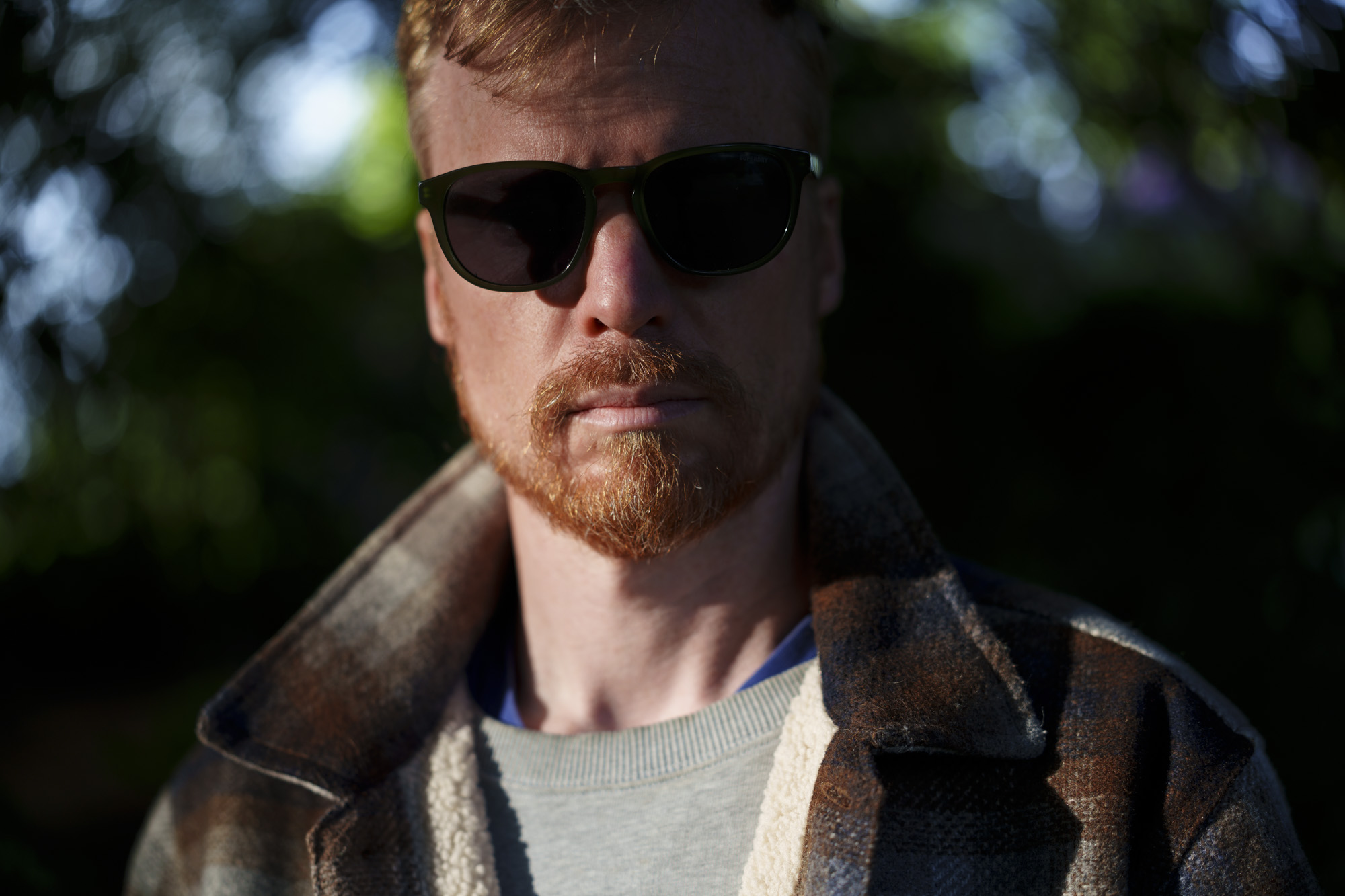

The 50-150mm's qualities aren't all about bokeh, either – the lens is consistently sharp from center to edges across the zoom range and aperture settings, besides the natural focus fall off when shooting at wider apertures with shallow depth of field.
Having shot all pictures during my test in RAW and JPEG, I further assessed quality through Adobe Camera Raw by directly comparing like-for-like files, keen to know the extent of in-camera correction at play.
Minor pin-cushion distortion across the entire zoom range surprised me – I'd normally expect it just at the telephoto end of this zoom range, not at 50mm. JPEGs are notably sharper than in RAW, too. Still, neither pin-cushion distortion nor relative lens softness are an issue – corrected RAW images are spectacular.


As for vignetting and color fringing, both are kept under tight control, as are ghosting and flare artifacts when shooting into direct sunlight. Optically, the 50-150mm F2 GM is pretty much flawless, save for easily corrected pin-cushion distortion.
When pairing the lens with a high-resolution full-frame sensor, like I did with the 61MP Sony a7R V, there's no trouble cropping in on stills to effectively further extend reach. I shot a solid set of soccer images, capturing players across the pitch largely from one position on the touchline with the 50-150mm lens.
And it's this cropping flexibility that has convinced me the 50-150mm's wider focal length is much more versatile than 70-200mm.
Sony FE 50-150mm F2 GM: sample images


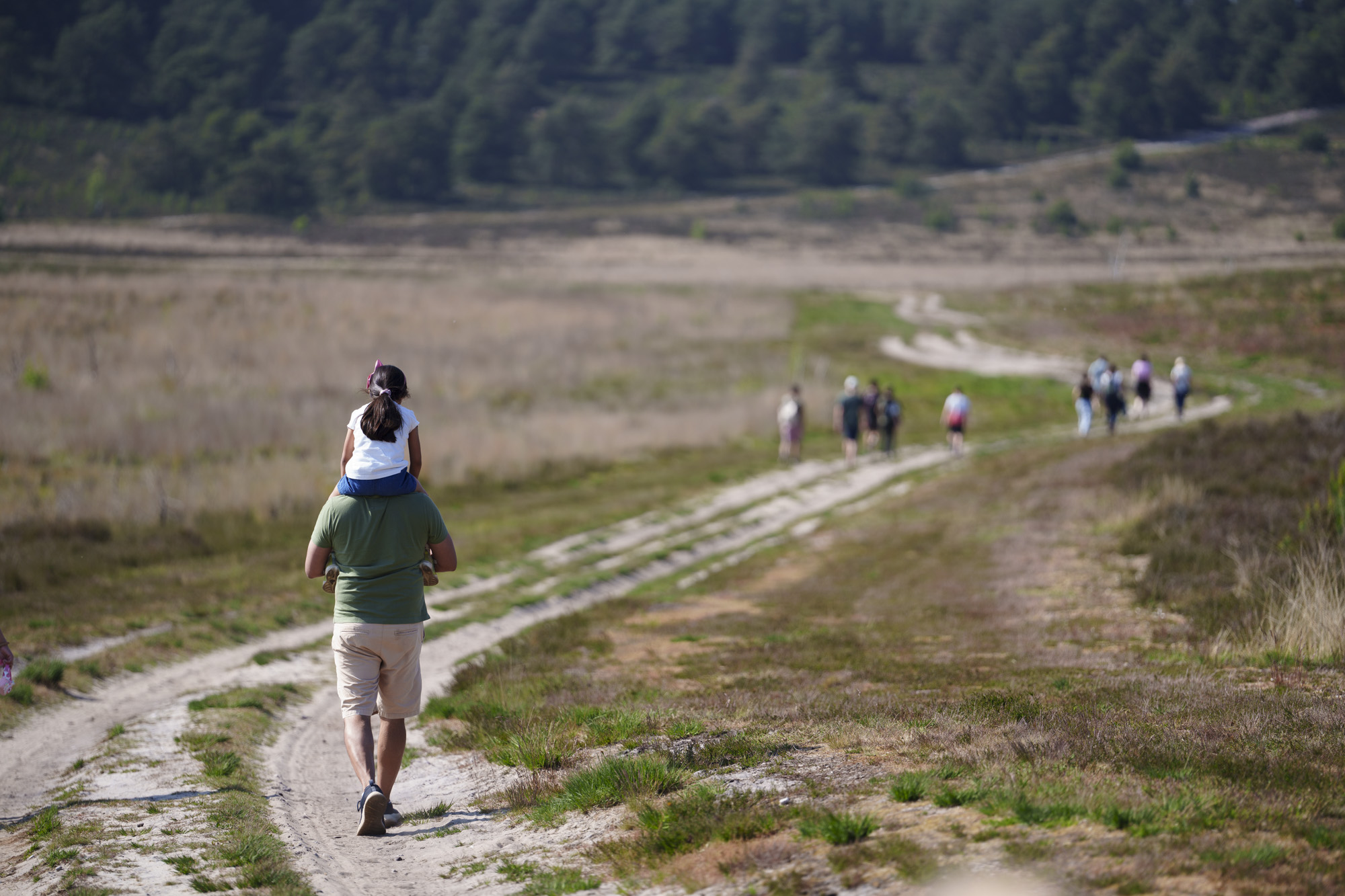

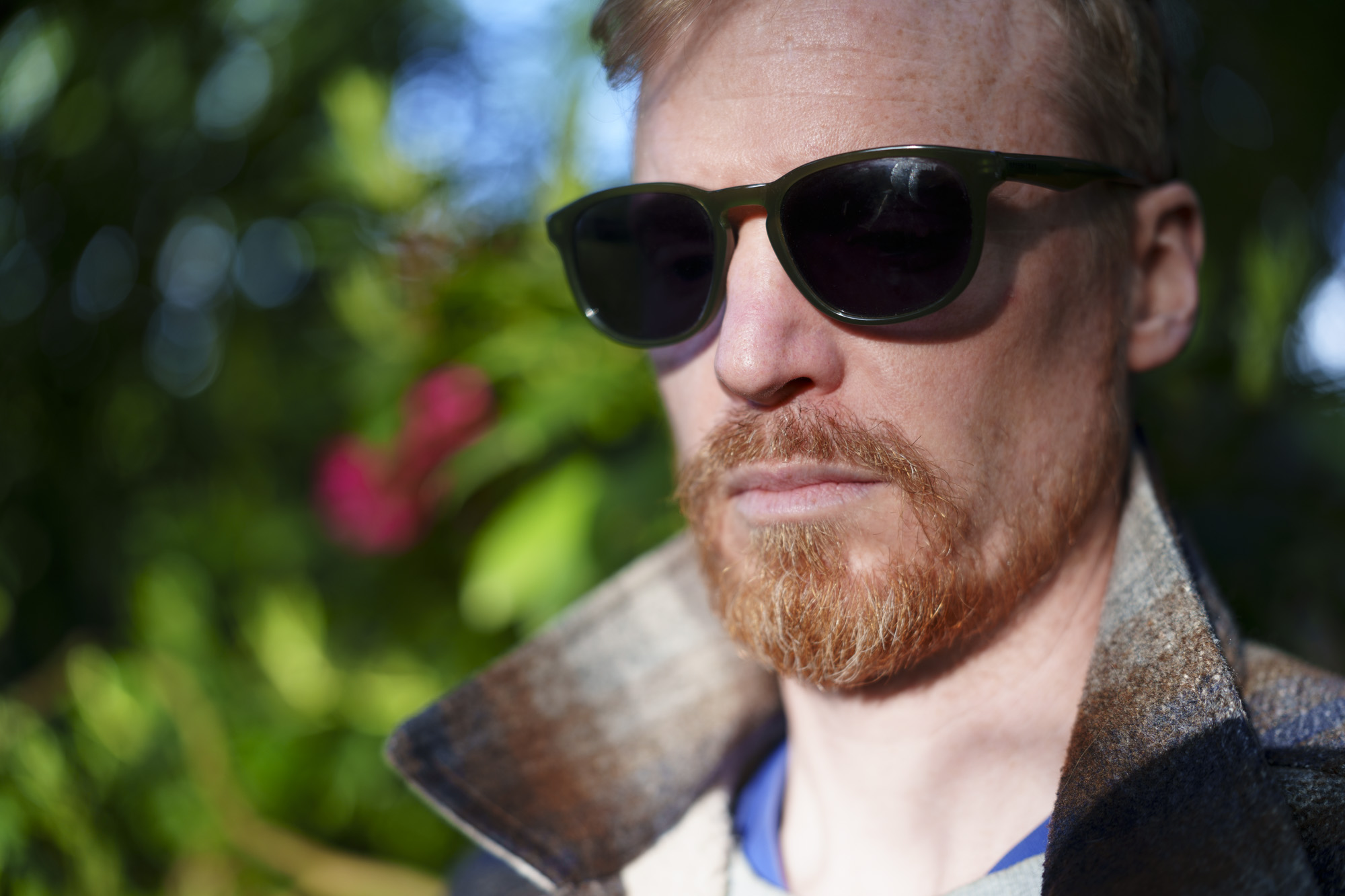


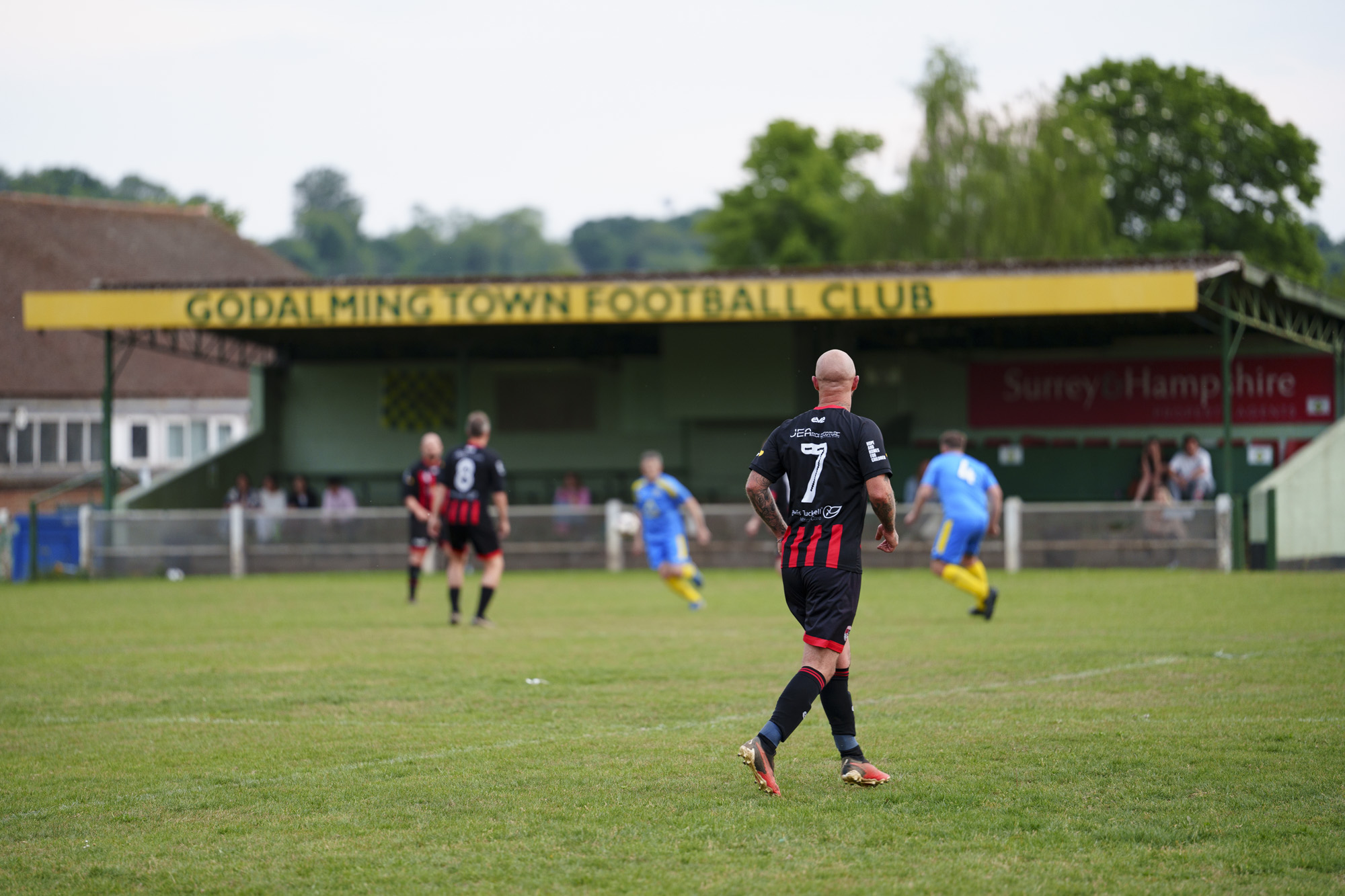

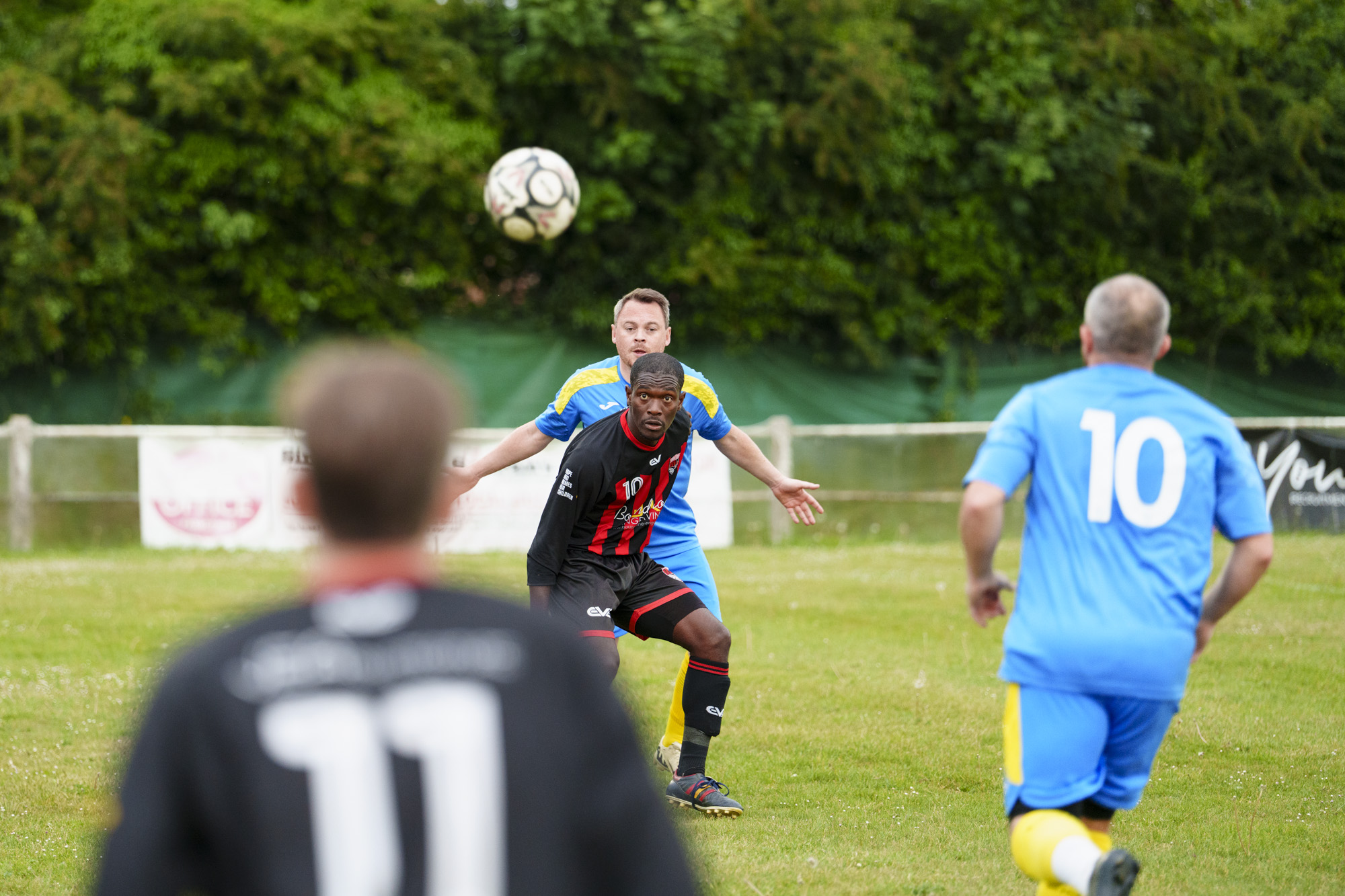

Should you buy the Sony FE 50-150mm F2 GM?
Buy it if...
You shoot events photography
For weddings and other events, the 50-150mm F2 offers a versatile zoom range and maximum aperture combination. Depending on the assignment, it could be the only lens you need.
You want top quality performance
Packing prime lens quality and bright aperture versatility, together with snappy autofocus, the 50-150mm doesn't skip a beat.
You need a robust lens
Heavy and big it may be, but the 50-150mm is a superbly built lens that will withstand the rigors of demanding professional use.
Don't buy it if...
You know your focal length
Designed to do the job of several primes, the 50-150mm is overkill for users who usually stick to a specific focal length. If this is you, you'll find a cheaper and smaller alternative prime.
You want a lightweight zoom
If the maximum f/2 aperture is overkill for your work, Sony also offers f/2.8 and f/4 zooms that are both smaller and much cheaper.
How I tested the Sony FE 50-150mm F2 GM
- I had the lens and the Sony a7R V camera for a three-week loan
- I've shot portraits, sports and more
- I've also taken multiple series of identical images with the lens at different settings
I had a decent length of time with the Sony FE 50-150mm F2 GM lens – almost a month, during which time I was able to test it in multiple scenarios, including sports and for portraits.
Sony loaned me the a7R V to pair the lens with. With the camera's 61MP sensor and superb autofocus, the lens has felt even more versatile – giving greater scope for cropping into images such as distant players in football (soccer) match.
To really show the benefit of the f/2 aperture, I have made sure to use it regularly, and to take like-for-like images at different apertures to compare handling and quality.
- First reviewed May 2025

Tim is the Cameras editor at TechRadar. He has enjoyed more than 15 years in the photo video industry with most of those in the world of tech journalism. During his time as Deputy Technical Editor with Amateur Photographer, as a freelancer and consequently editor at Tech Radar, Tim has developed a deeply technical knowledge and practical experience with cameras, educating others through news, reviews and features. He’s also worked in video production for Studio 44 with clients including Canon, and volunteers his spare time to consult a non-profit, diverse stories team based in Nairobi. Tim is curious, a keen creative, avid footballer and runner, and moderate flat white drinker who has lived in Kenya and believes we have much to enjoy and learn from each other.
You must confirm your public display name before commenting
Please logout and then login again, you will then be prompted to enter your display name.
